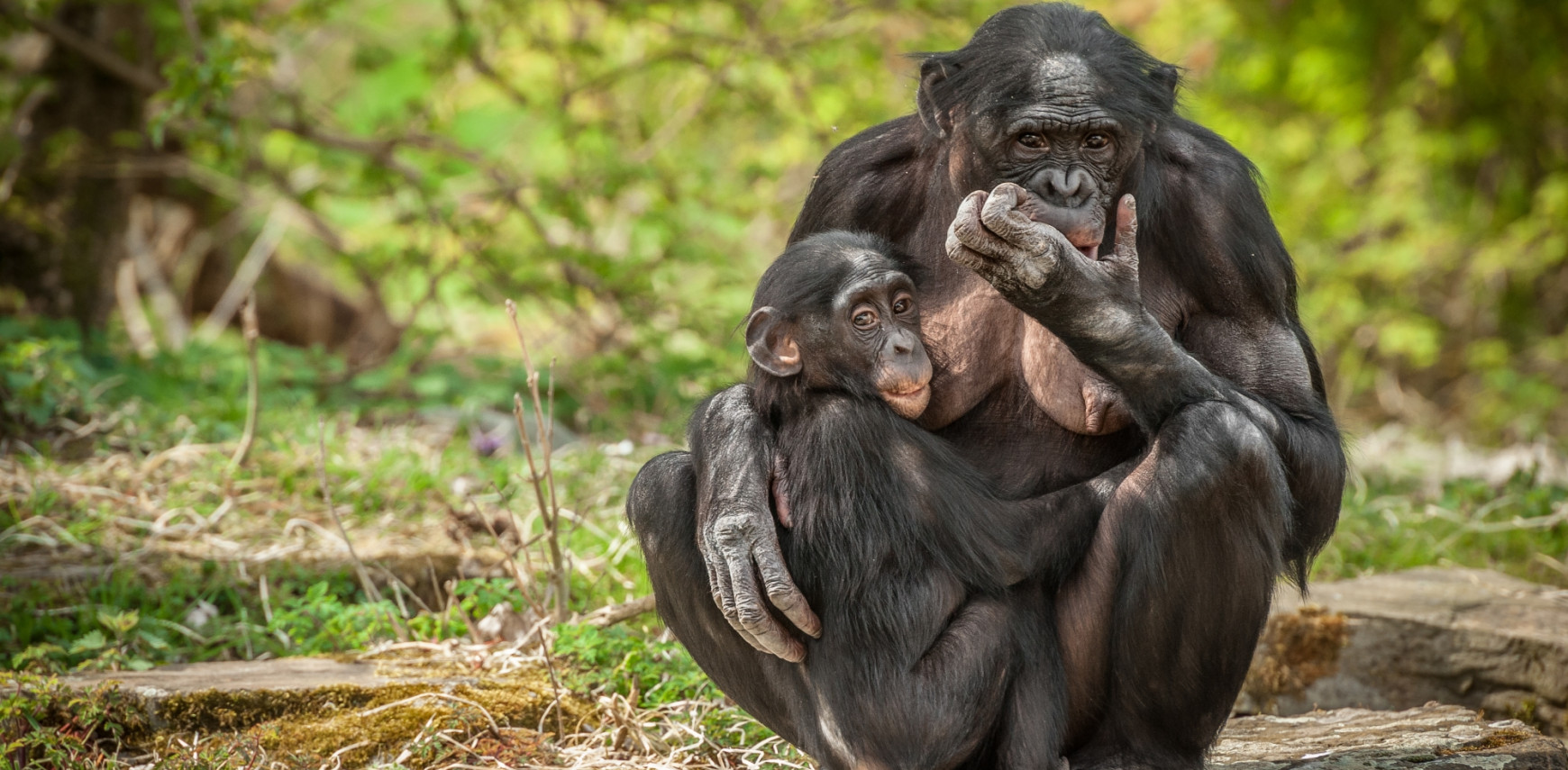Bonobo
Just like okapi, bonobos (Pan paniscus) are endemic to the Democratic Republic of Congo, in the rainforest south of the River Congo. The main threats to bonobos in the wild are hunting and deforestation. While they are not actively hunted, some become victims as an accidental side-effect of illegal hunting for bushmeat. Just like okapi, bonobos also serve as ambassadors for the rich Congolese rainforest and the zoo population is managed as a back-up for the population in the wild. When EEPs were set up in 1985, the bonobo programme was among the first, together with those of the okapi and the Congo peafowl.
The EEP for this species is coordinated by Jeroen Stevens, one of the previous ZOO scientists, and curator of mammals Sarah Lafaut. Planckendael ZOO has actually been conducting scientific research with bonobos for more than 25 years. This contributes significantly to a better understanding of bonobos and helps us manage the breeding programme more effectively.
In DR Congo, researcher Barbara Fruth works as the director of the LuiKotale Bonobo project on the southwestern edge of Salonga National Park. By systematically observing the behaviour of individual bonobos and analysing the urine, faecal and hair samples, we seek to further expand our knowledge of the behavioral and evolutionary ecology of bonobos.

